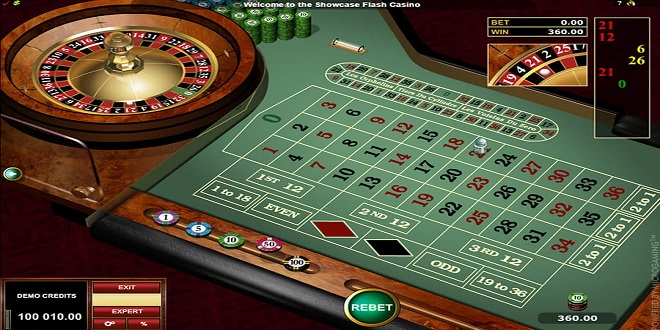
Can Roulette Be Beaten?
Back when, yes. Now, probably not. When roulette wheels were strictly mechanical devices whose performances were not analyzed very often, biased wheels—that is, wheels that caused certain numbers to come up more than probability indicates—existed, and really smart players could get substantial edges at such wheels. Such biased wheels had deep pockets, so once the ball was settling in, it settled in quickly. The stories you hear of banks being “broken” in Monaco and Las Vegas and Atlantic City are all stories based on the existence of biased wheels in those venues.
The Game
There are two types of roulette wheels—the “American wheel,” which was developed in Europe, and the “European wheel,” which was developed in America. No, I didn’t screw up the above sentence. What they use in Europe, America invented; and what is used in America, Europe invented. Such is the way of the world. The American wheel has two green pockets labeled 0 and 00, along with pockets labeled 1 through 36; the European wheel has only one green 0 but also has pockets labeled 1 through 36. The European wheel is the preferred one because the house edge is 2.7 percent or an expected loss of $2.70 per $100 wagered; while on the American wheel, the house edge is 5.26 percent or an expected loss of $5.26 per $100 wagered.
The Wheel Isn’t What You Think
One, two, three, four, five, six, seven, eight…sorry, that’s not how it goes on a roulette wheel. Take a look at the American Double-Zero Wheel, and you’ll note that no numbers run in normal strings; now take a look at the betting layout, and all the numbers run in their correct strings. Huh? What’s going on here?
The Bets of Roulette
The Straight-Up Bet (French: En Plain): You bet one or more individual numbers. If your number hits, you are paid 35-to-1, meaning $35 for every $1 wagered. If you bet other numbers as well, these would be losers. The house edge on the Double-Zero Wheel is 5.26 percent, and on the Single-Zero Wheel, it is 2.70 percent.
Split Bet (French: A Cheval): You place your wager on the line between two numbers, and if either of these numbers comes up, you are paid 17-to-1. The house edge on the Double-Zero Wheel is 5.26 percent, and on the Single-Zero Wheel, it is 2.70 percent.
The Street Bet, also called Three-Number Bet, Side Bet, or Trio (French: Transversal): You are betting that any one of three numbers hits. You place your chips on the outside border of the three numbers. If you win, you are paid off at 11-to-1. The house edge on the Double-Zero Wheel is 5.26 percent, and on the Single-Zero Wheel, it is 2.70 percent.
Two Helpful Additions to the Game
There is good news for those of you who were sick of reading the following sentence about the above bets: “The house edge on the Double-Zero Wheel is 5.26 percent, and on the Single-Zero Wheel it is 2.70 percent.” Some casinos—perhaps inspired by divine providence—offer an element that really reduces the house edge on the outside bets of Even-Odd, HighLow, and Red-Black.
Some casinos will return half your bet if the 0 or 00 hits. This is called “Surrender.” This option reduces the house edge in the Double-Zero game to 2.63 percent—not so great, but still twice as good as the 5.26 percent on all the other bets. Many casinos that have this option do not advertise it, so always ask the casino dealer if this option holds true for their game. Then never, ever, make any other bet at roulette except the ones mentioned in the previous paragraph.
Lastly Comment
If the 0 should hit while your bet is in prison, nothing happens, but then the bet must hit two consecutive times for it to be liberated. The en prison rule lowers the house edge on the Single Zero wheel to 1.35 percent, and that is a good bet—the best one you’ll probably ever find at a roulette table.
Feel free to visit to know more about – loto188





